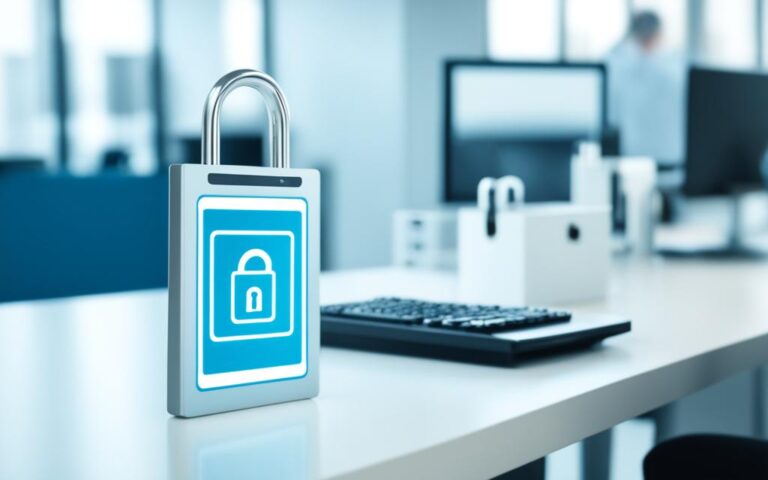The Role of Data Destruction in Securing Endpoints in BYOD Policies
Endpoint Data Loss Prevention (DLP) is a crucial aspect of securing sensitive information on personal devices in a BYOD environment. It aims to prevent accidental or malicious data leaks, loss, misuse, or destruction. BYOD policies have become more prevalent with the rise of remote work, making endpoint DLP even more critical.
Endpoints such as laptops, desktops, smartphones, and IoT devices are vulnerable to physical theft or loss, insider attacks, negligence, and cyberattacks. To mitigate these risks, organizations need robust endpoint DLP solutions that can detect and prevent data loss incidents. Data destruction plays a crucial role in securing endpoints by ensuring that sensitive information is permanently deleted from devices when they reach the end of their lifecycle. This prevents unauthorized access to data in the event of theft or disposal of devices. Implementing proper data destruction practices is essential for fortifying BYOD policies security.
To effectively secure endpoints in a BYOD environment, organizations must prioritize data protection and implement comprehensive security measures. Endpoint DLP, combined with data destruction, provides a strong defense against data loss and breaches.
In the following sections, we will explore the concepts of Endpoint Data Loss Prevention, the role of endpoints in data loss, how endpoint DLP works, the benefits it offers, and concluding remarks on fortifying BYOD policies security.
What is Endpoint Data Loss Prevention?
Endpoint Data Loss Prevention (DLP) is a comprehensive security measure that focuses on securing sensitive information stored on personal devices in a BYOD environment. Its primary goal is to prevent accidental or malicious leaks, loss, misuse, or destruction of data. By monitoring data access and usage on each device, endpoint DLP can identify potential leaks or unauthorized actions and take remedial steps to mitigate the risk. It has become an essential part of organizations’ security infrastructure due to the increasing adoption of BYOD policies. With endpoint DLP, organizations can ensure that sensitive data remains protected, even when accessed from personal devices.
The Role of Endpoints in Data Loss and Leaks
Endpoints, such as laptops, desktops, smartphones, and IoT devices, play a significant role in data loss and leaks within a BYOD environment. As organizations embrace digital transformation and witness a rapid proliferation of connected devices, the attack surface expands, and the risk of data loss increases. Data on endpoints can be lost or leaked through physical theft or loss, insider attacks, negligence, and cyberattacks. These risks highlight the need for robust endpoint DLP solutions that can detect and prevent data loss incidents. Securing endpoints is crucial in preventing unauthorized access and protecting sensitive data from being compromised.
“Data protection requires a proactive approach that encompasses strong security measures across all endpoints. Failure to secure endpoints can lead to severe consequences, including reputational damage, financial losses, and legal repercussions.”
To illustrate the significance of endpoints in data loss and leaks, consider the following scenarios:
- Physical theft or loss: When an endpoint device, such as a laptop or smartphone, is stolen or misplaced, the data stored on the device becomes vulnerable to unauthorized access. Without proper security measures, sensitive information can be easily compromised.
- Insider attacks: Employees with malicious intent can intentionally leak or steal sensitive data from endpoints. This could be driven by personal gain, vendettas, or corporate espionage. Robust endpoint security measures are crucial in detecting and preventing such incidents.
- Negligence: Accidental data loss can occur due to employee negligence, such as leaving a laptop in a public place or sending an email to the wrong recipient. BYOD policies must address employee training and data handling protocols to minimize the risk of unintentional data leaks.
- Cyberattacks: Hackers target endpoints as entry points to gain access to an organization’s network. Through techniques like phishing, malware, or ransomware attacks, they can exploit vulnerabilities in endpoints to steal sensitive data or cause financial and reputational damage.
In order to protect data and mitigate the risks associated with endpoints, organizations need to implement robust Endpoint Data Loss Prevention (DLP) solutions. These solutions monitor and analyze data access and usage on each device, flagging any suspicious activities and preventing data loss incidents.
Benefits of Endpoint Data Loss Prevention
Endpoint Data Loss Prevention (DLP) solutions offer several significant benefits:
- Data security: By implementing endpoint DLP, organizations can enhance data security by safeguarding sensitive information on endpoints.
- Improved visibility and control: Endpoint DLP solutions provide IT teams with better visibility and control over the types of data stored on various devices, allowing them to define and enforce security policies accordingly.
- Device control: With endpoint DLP, organizations can exercise control over the access, viewing, downloading, uploading, and transmission of sensitive data on each device, minimizing the risk of unauthorized actions.
- Compliance: Endpoint DLP enables organizations to demonstrate security controls and compliance with regulatory requirements, ensuring they adhere to data protection standards.
By effectively implementing endpoint DLP, organizations can secure sensitive data, enhance device control, and protect against data loss incidents.
| Endpoint Data Loss and Leaks | Risks | Solutions |
|---|---|---|
| Physical theft or loss | Unauthorized access to sensitive data | Robust security measures, encryption, remote wipe capability |
| Insider attacks | Theft or exposure of sensitive data | Employee monitoring, access controls, security awareness programs |
| Negligence | Accidental data leaks | Employee training, data handling protocols, email encryption |
| Cyberattacks | Data breaches, financial losses | Vulnerability assessments, multi-factor authentication, regular security updates |
How Endpoint Data Loss Prevention Works
Endpoint Data Loss Prevention (DLP) is a fundamental aspect of securing sensitive information on personal devices in a BYOD environment. It works by continuously monitoring the access and use of data on each device, ensuring that data is protected from accidental or malicious leaks, loss, misuse, or destruction.
Endpoint DLP solutions can be categorized into two types: agent-based and agentless. Agent-based endpoint DLP employs software installed on devices to monitor sensitive data stored on, accessed from, sent to, or sent from the device. On the other hand, agentless DLP services utilize cloud-based technology to protect unmanaged devices. This allows organizations to extend data protection to a wider range of endpoints.
Implementing Endpoint DLP
The process of implementing endpoint DLP involves several key steps:
- Classifying sensitive data: Endpoint DLP solutions begin by identifying and classifying sensitive data based on predefined criteria such as data type, confidentiality level, or regulatory requirements.
- Monitoring network endpoints: Once the data is classified, endpoint DLP continuously monitors all network endpoints, including laptops, desktops, smartphones, and IoT devices, to detect any unauthorized access or data transfer.
- Applying security policies: Endpoint DLP enforces security policies to control data access, usage, and transmission. These policies can include restrictions on file sharing, blocking of certain websites or applications, and encryption requirements.
- Reviewing incidents: In the event of a potential data loss incident, endpoint DLP generates alerts and provides detailed reports for review. This allows organizations to investigate and take appropriate actions to prevent further data breaches.
By classifying data, monitoring user interactions, and enforcing security policies, endpoint DLP solutions can effectively identify potential data leaks or unauthorized actions and prevent data loss incidents.
Key Benefits of Endpoint DLP
Endpoint Data Loss Prevention solutions offer a range of benefits for organizations:
- Data security: Endpoint DLP enhances data security by monitoring and protecting sensitive information on personal devices, ensuring its confidentiality and integrity.
- Device control: By implementing endpoint DLP, organizations gain improved visibility and control over the access, usage, and transmission of data on each device, reducing the risk of data loss.
- Risk mitigation: Endpoint DLP helps organizations mitigate the risk of data breaches by proactively detecting and preventing potential leaks or unauthorized actions.
- Regulatory compliance: Implementing endpoint DLP enables organizations to demonstrate compliance with industry regulations and data protection standards, enhancing trust with customers and stakeholders.
Benefits of Endpoint Data Loss Prevention
Endpoint Data Loss Prevention (DLP) solutions offer several significant benefits for organizations aiming to protect their sensitive data and ensure data security across various endpoints. These solutions provide improved visibility and control over the types of data and sensitive information stored on laptops, desktops, smartphones, and other devices. By implementing endpoint DLP, organizations can enhance their data security measures, regardless of where the data resides.
One of the key advantages of endpoint DLP is the ability to control and monitor access to sensitive data on each device. IT teams can set granular policies to regulate the viewing, downloading, uploading, and transmission of data, ensuring that only authorized individuals can access and interact with sensitive information.
“Implementing endpoint DLP allows organizations to demonstrate security controls and compliance with regulatory requirements.”
These solutions also play a vital role in demonstrating security controls and compliance with regulatory standards. Endpoint DLP helps organizations meet data protection regulations and enforce security policies, thus avoiding potential legal and financial consequences associated with data breaches.
Furthermore, the implementation of endpoint DLP solutions allows businesses to secure sensitive data effectively. By preventing data loss incidents through comprehensive monitoring and control mechanisms, organizations can safeguard their valuable information and maintain their reputation.
Benefits of Endpoint Data Loss Prevention
| Benefits | Description |
|---|---|
| Enhanced Data Security | Endpoint DLP protects data on various devices, irrespective of their physical location. |
| Improved Visibility and Control | IT teams gain better visibility and control over the types of data accessed and shared on each endpoint device. |
| Regulatory Compliance | Endpoint DLP helps organizations demonstrate compliance with data protection regulations. |
| Prevention of Data Loss Incidents | By monitoring and controlling data access and usage, endpoint DLP solutions prevent data leaks and loss. |
Endpoint DLP solutions not only enhance data security and protection but also provide comprehensive device control, allowing organizations to mitigate the risks associated with data loss incidents and protect sensitive information from unauthorized access.
Conclusion
Endpoint Data Loss Prevention (DLP) is a vital aspect of securing sensitive information in a BYOD environment. By implementing robust endpoint DLP solutions and adhering to proper data destruction practices, organizations can fortify their BYOD policies security.
Securing endpoints is crucial as it helps protect sensitive data stored on personal devices from accidental or malicious leaks, loss, misuse, or destruction. With the increasing adoption of BYOD policies, organizations need to prioritize data protection to mitigate risks.
By adopting a comprehensive approach to endpoint security, including the implementation of endpoint DLP solutions, organizations can effectively safeguard corporate data. It is essential to securely manage data throughout its lifecycle and dispose of devices securely through certified data destruction services like server recycling UK.
With a strong security infrastructure in place, businesses can enhance data protection, achieve regulatory compliance, and confidently embrace the benefits of BYOD policies without compromising data security.
FAQ
What is the role of data destruction in securing endpoints in BYOD policies?
Data destruction plays a crucial role in securing endpoints by ensuring that sensitive information is permanently deleted from devices when they reach the end of their lifecycle. This prevents unauthorized access to data in the event of theft or disposal of devices.
What is endpoint data loss prevention?
Endpoint data loss prevention (DLP) is a comprehensive security measure that focuses on securing sensitive information stored on personal devices in a BYOD environment. Its primary goal is to prevent accidental or malicious leaks, loss, misuse, or destruction of data.
What is the role of endpoints in data loss and leaks?
Endpoints, such as laptops, desktops, smartphones, and IoT devices, play a significant role in data loss and leaks within a BYOD environment. As organizations embrace digital transformation and witness a rapid proliferation of connected devices, the attack surface expands, and the risk of data loss increases.
How does endpoint data loss prevention work?
Endpoint data loss prevention works by continuously monitoring the access and use of data on each device. It includes both agent-based and agentless solutions. By classifying data and monitoring user interactions, endpoint DLP solutions can identify potential leaks or unauthorized actions and enforce security policies to prevent data loss incidents.
What are the benefits of endpoint data loss prevention?
Endpoint data loss prevention solutions offer several significant benefits. They provide improved visibility and control over the types of data and sensitive information stored on various endpoints. They enhance data security by protecting data on endpoints, regardless of where it resides. They enable IT teams to control the access, viewing, downloading, uploading, and transmission of sensitive data on each device. Furthermore, implementing endpoint DLP allows organizations to demonstrate security controls and compliance with regulatory requirements.













